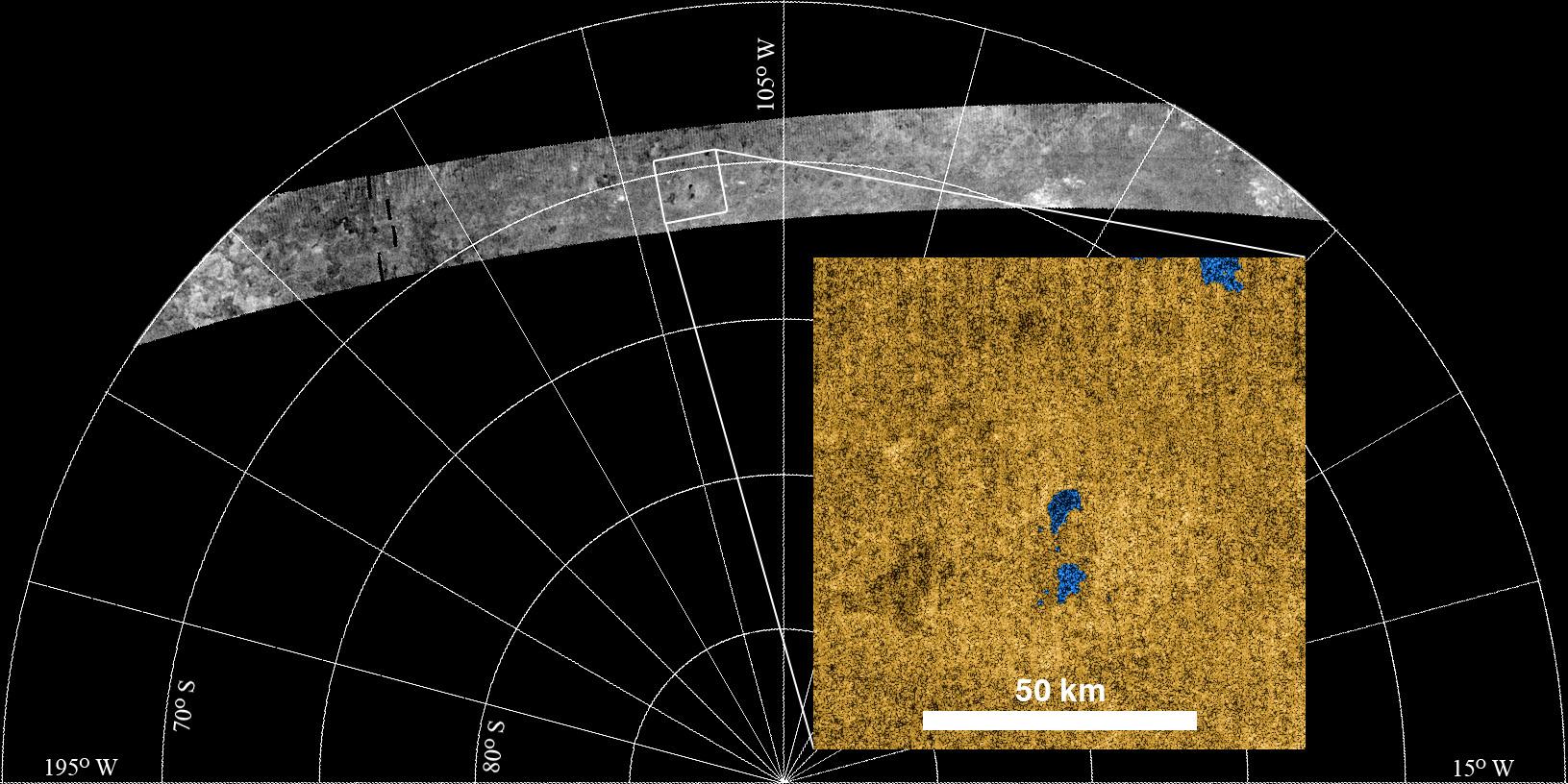Radar Sees Lakes in Titan’s Southern Hemisphere

| PIA Number | PIA10018 |
|---|---|
| Language |
|
Cassini's radar instrument finds lakes in the southern hemisphere of Titan during the most recent Titan flyby. This is the first confirmation of lakes in the southern hemisphere with the radar instrument. Hundreds of lakes have already been discovered and imaged by radar at Titan's north pole. This finding is important to scientists who are trying to understand how Titan's environment works.
Cassini completed its 37th flyby of Saturn's moon Titan on Oct. 2, 2007, allowing the Cassini Titan Radar Mapper to obtain this southernmost image to date.
Shown here is a portion of the image swath and an inset with details of a small portion in false color. Titan's south pole is at the bottom center. The nature and similarities between the northern and southern near-polar regions supports the idea that much of Titan's poles are climate-driven.
A few small dark patches - liquid-hydrocarbon-filled lakes - stand out, at about 70 degrees south, and are highlighted in the insert (lakes are colored blue). Other features in the scene include broad, steep-sided depressions adjoined to sinuous depressions, interpreted to be empty topographic basins or drained lakes fed by channels, and complex mottled terrain, akin to those at similar northern latitudes. Similarities in features between northern and southern hemispheres imply that the climatic conditions are also similar.
The image shown here is a 1.4-kilometer (0.87-mile) resolution, 2,250-kilometer (1,400 mile) subsection of a 4,500-kilometer (2,800-mile) long swath, which is 150 kilometers (93 miles) wide at the narrowest point. The insert is 90 by 90 kilometers (56 by 56 miles), centered at 70.5 degrees south and 113.9 degrees west. Future southern flybys will image closer to the pole and are expected to show more lakes.
The Cassini-Huygens mission is a cooperative project of NASA, the European Space Agency and the Italian Space Agency. The Jet Propulsion Laboratory, a division of the California Institute of Technology in Pasadena, manages the mission for NASA's Science Mission Directorate, Washington, D.C. The Cassini orbiter was designed, developed and assembled at JPL. The radar instrument was built by JPL and the Italian Space Agency, working with team members from the United States and several European countries.
For more information about the Cassini-Huygens mission visit
http://saturn.jpl.nasa.gov/home/index.cfm .
Credit: NASA/JPL/USGS
